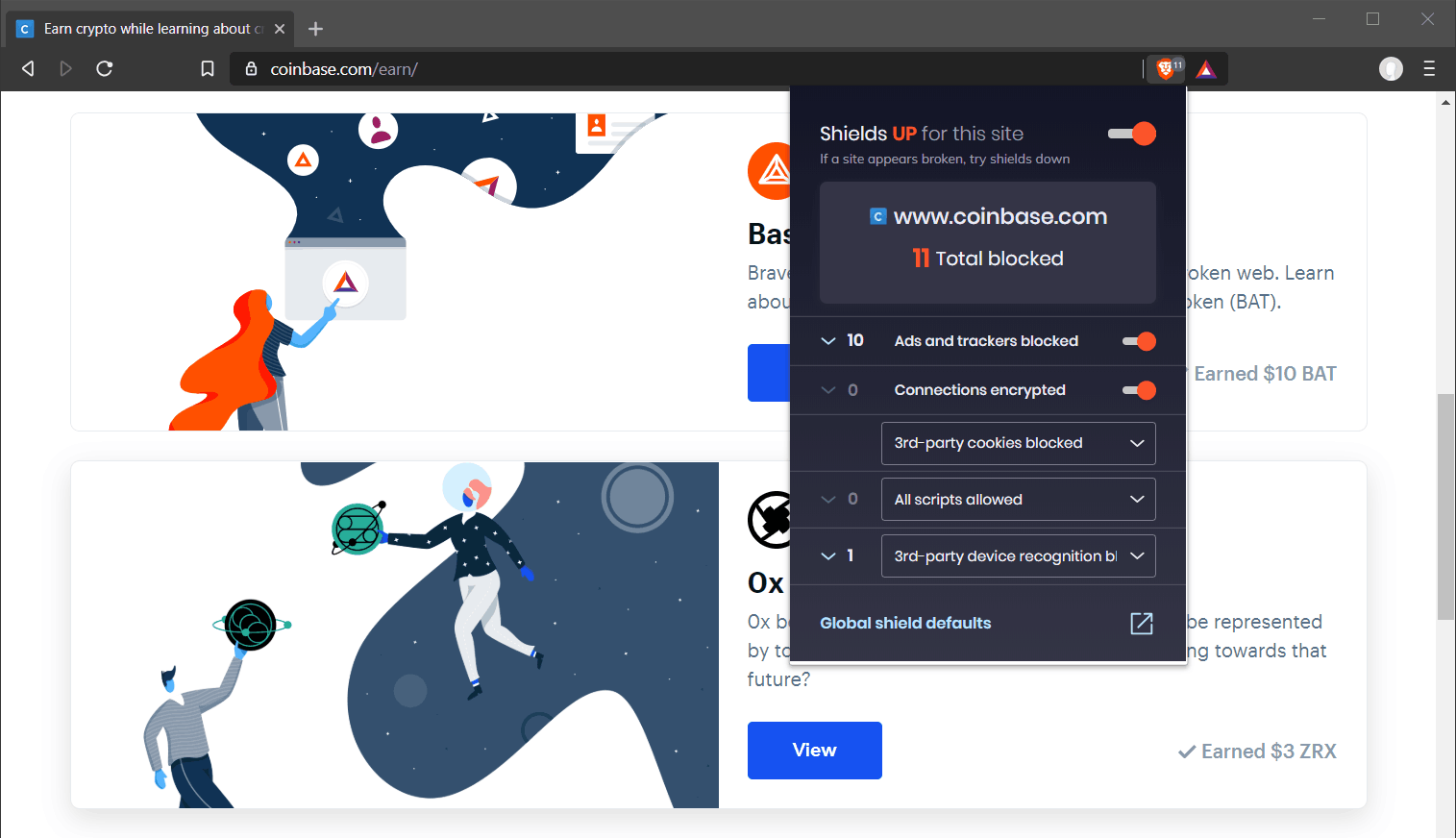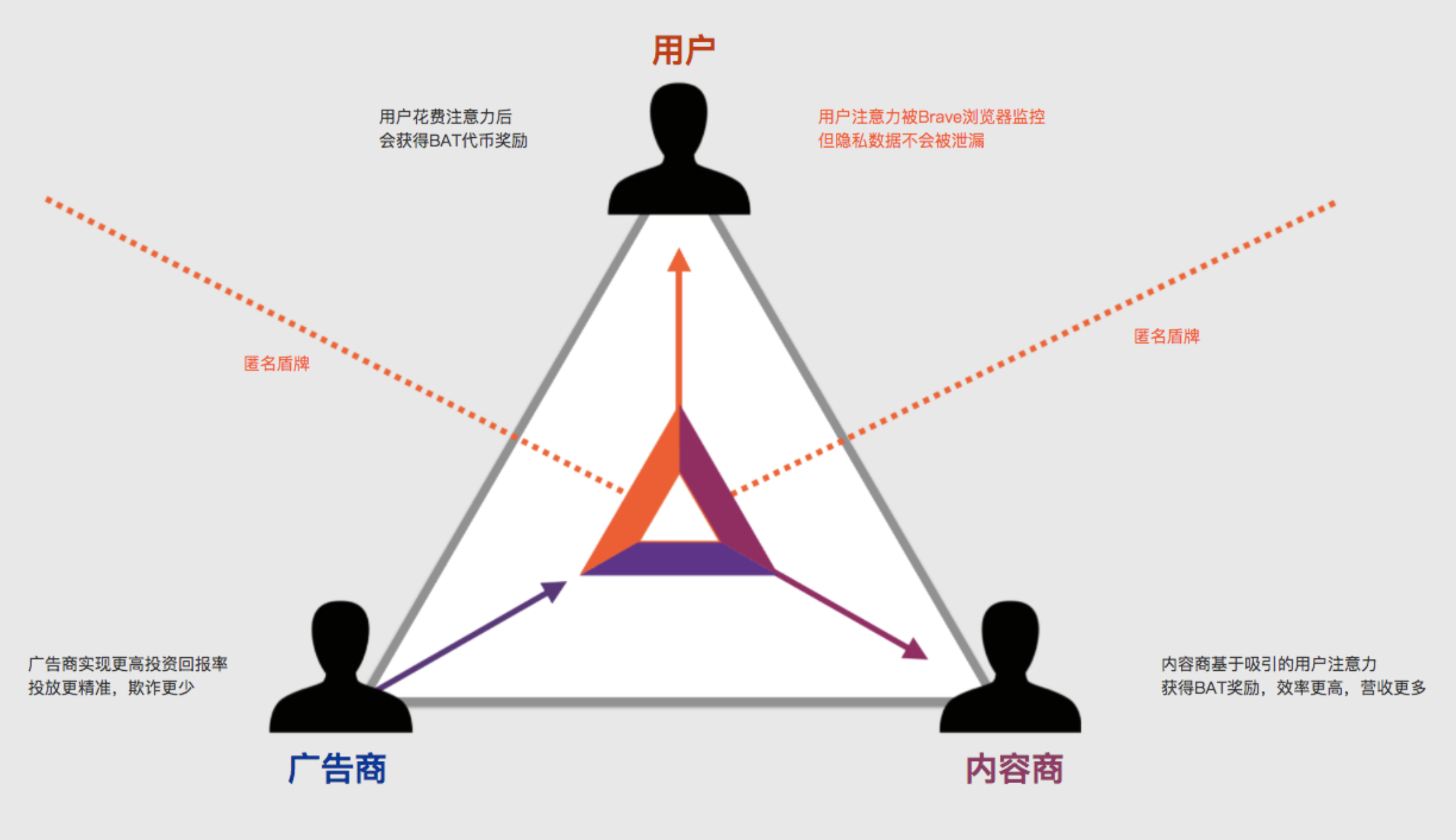BAT (Basic Attention Token) is a digital asset created by Brendan Eich, the founder of JavaScript and co-founder of Mozilla and Firefox browsers. Its designed to facilitate transactions between advertisers and users, addressing issues with ad displays and user incentives in web browsers.
The project is built on the Brave browser, aiming to establish decentralized digital advertising services. By employing zero-knowledge proofs, it safeguards user privacy while rewarding users for their attention. The Brave browser introduces a unique concept – Attention. Using the ANONIZE algorithm, it can track user behavior, such as which links are clicked most frequently or which websites receive the most prolonged visits. These behaviors can be quantified using the unit of "Attention," facilitated by embedding a blockchain ledger system within the browser. The token circulating in this system is BAT (Attention Token). In summary, the Brave browser integrated with BAT tokens fosters a positive feedback loop among merchants, website owners, and users. Users earn BAT tokens for viewing ads or engaging with quality content, while website owners are rewarded for successfully capturing user attention. Both the users and website owners receive BAT tokens funded by advertisers spending.
Project Applications
BATs solution is based on blockchain technology, enabling fair and transparent decentralized digital advertising exchanges. Its first component is the Brave browser, a fast, open-source browser that prioritizes privacy. Brave comes equipped with built-in extensions that block third-party ads and trackers. Users can opt into "Brave Rewards" to earn BAT tokens by actively viewing ads. BAT establishes a ledger system that quantifies user attention for distributing rewards. In Brave Rewards mode, content-providing websites can receive rewards (after registering with BAT), and users have the option to tip these sites, supporting content creators, while also earning rewards through ad viewing. Brave protects user privacy while compensating them for their attention, connecting advertisers, publishers (content creators), and users. This eliminates high intermediary costs in the current advertising system and restores the efficiency and revenue that should belong to all three parties in the ad network.
1. Brave Browser
Brave is a fast, open-source browser that emphasizes privacy protection. It comes preloaded with extensions that block ads, trackers, and malware, and includes an anonymous ledger system that quantifies user attention to reward content providers accurately.

Figure 1: Brave Browser Extensions
As shown in Figure 1, Braves default installation includes extensions that block ads and trackers, ensuring user privacy data is not accessible to websites. Since users no longer need to download large amounts of ads and trackers, web pages load faster. Brave claims its mobile version loads new websites two to eight times faster than Chrome and Safari, and its desktop client is twice as fast as Chrome.
2. Basic Attention Token (BAT)
Attention Tokens (BAT) serve as the currency unit for transactions between advertisers, content providers, and users. Through the BAT platforms tokens, various forms of advertising and services based on user attention can be implemented. Tokens are allocated and settled by a system that quantifies user attention. When users spend time and mental focus on ads or content, they expend attention. BAT is an ERC20 token that operates on the decentralized Ethereum blockchain platform, enabling global circulation and exchangeability with other currencies on major exchanges.
3. Brave + BAT = Efficient Digital Advertising Market
Brave can determine where users spend their time and accurately calculate and distribute BAT rewards to content providers. This creates a transparent and efficient blockchain-based advertising platform. Blockchain eliminates intermediaries and reduces fraud, allowing content providers to earn more income. Users avoid malicious ads while receiving fewer but more targeted ads and earning rewards, enabling advertisers to spend more efficiently without paying for fake traffic.

Figure 2: BAT Ad System
As shown in Figure 2, BAT restructures the relationship between advertisers, content providers, and users, directly protecting their interests. Brave anonymously monitors user attention, only counting it when users actively view ads and content in active tabs. The value of attention spent on ads is measured by duration and pixel quantity. In future system designs, models will define each action. The ad system uses local machine learning algorithms to anonymously match ads with user interests, significantly reducing irrelevant ads.
Users earn BAT tokens for viewing ads, which can be used to pay for premium content and services within the Brave platform. Content providers receive the majority of total ad revenue, and users can donate some tokens to support them, thereby increasing their earnings.
4. Privacy Protection
User privacy is protected through the ANONIZE algorithm, and open-source code and secure encryption reduce ad fraud, improving system integrity and transparency.
Related Links:
https://www.dprating.com/rating/report/98
https://basicattentiontoken.org/
